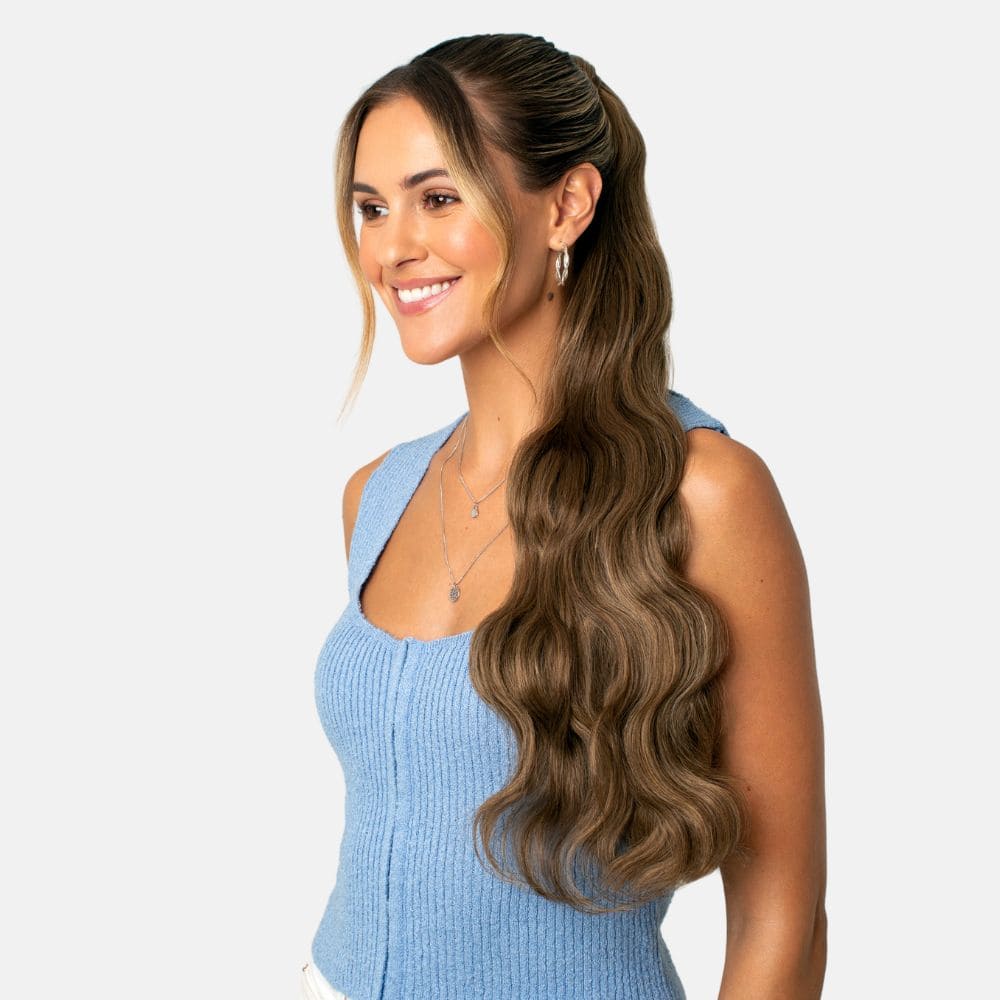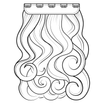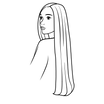Hair extensions are a fantastic way to elevate your look, whether you’re adding length, volume, or both. However, not all hairstyles are compatible with extensions. While there are countless hacks to style your extensions discreetly and comfortably, certain hairstyles can cause discomfort or even compromise the durability of the extensions.
Hairstyles to Avoid With Hair Extensions
Hair extensions are versatile, but some styles put undue stress on the hair or make the extensions more visible. Here’s what to steer clear of:
1. Tight Hairstyles
Tight hairstyles, like sleek buns, high ponytails, and tightly pulled braids, should be avoided unless you use specific hacks to modify the style for extensions. Hair Extensions are attached to your natural hair, and pulling them too tightly can cause tension on the roots, leading to discomfort or even traction alopecia over time.

If you want a sleek updo, opt for a lower bun/ponytail or loose braid. Looser styles distribute tension more evenly and keep the bonds or clips hidden. Alternatively, consider using extensions specifically designed for the style you want to achieve. For instance, style-specific products like clip-in buns and clip-in ponytails are excellent options to effortlessly create your desired look while ensuring comfort and a natural appearance.

2. High Ponytails
A high ponytail is one of the trickiest styles for extensions. Without proper placement, the bonds or clips can peek through, ruining the seamless effect. However, some hacks—like flipping a One Piece Hair Extension upside down—can make this style achievable. If you’re wearing permanent extensions like tapes or bonds, ensure they are installed in a way that accommodates occasional high ponytails.
Top Tip: If you choose semi-permanent hair extensions consult a professional about your preferred hairstyles before getting your extensions fitted to ensure they provide the flexibility and versatility you need.
3. Middle Partings for Double French Braids
Double French braids with a middle parting often expose the wefts or bonds of extensions, especially if they are installed close to the scalp. While a single braid down the back is easier to disguise, double braids with extensions will require strategic placement and additional hair to ensure the extensions are fully concealed. If double French braids are a go-to hairstyle for you, we recommend using a multi-piece clip-in extension set. These can be strategically placed to adapt to your favourite look without requiring professional repositioning.

4. Messy Top Knots
Top knots, especially messy ones, can shift your extensions into visible areas. A low or mid-height messy bun is a safer alternative that provides the same relaxed vibe without risking exposure. You can also mix and match extension products to suit your needs. For example, if you have semi-permanent extensions, you can pair them with a wrap-in messy bun for days when you want to wear your hair up. This approach helps preserve the integrity of your professionally fitted extensions while giving you the flexibility to enjoy a variety of hairstyles.
Who Is Not a Good Candidate for Hair Extensions?
Hair extensions are a game-changer for many, but they aren’t suitable for everyone. Here are some reasons why someone might not be the best candidate:
Thin or Fragile Hair
The weight of the extensions can pull on the roots, leading to hair loss or thinning over time. This doesn’t mean that extensions are off the table, but it’s essential to choose the right option for your hair type. Tape-ins and clip-ins are lighter and often gentler on your natural hair, allowing you to enjoy longer, thicker locks while prioritising hair health.

Scalp Conditions
Individuals with scalp issues like psoriasis, eczema, or dermatitis may experience irritation or worsening symptoms due to the adhesive, clips, or bonds used to install extensions.
Frequent Swimmers
Chlorine and salt water can damage both natural hair and hair extensions, making them difficult to maintain. Frequent exposure to these elements can cause tangling, matting, and dryness in your extensions. We recommend opting for removable extensions, such as clip-in hair extensions, which can be easily taken out and reapplied as needed. This helps prevent damage and ensures both the extensions and your natural hair remain in great condition.
Low Maintenance Tolerance
Extensions require consistent care, including proper washing, brushing, and styling. If you prefer a low-maintenance hair routine, extensions may not be the ideal choice. However, clip-in hair extensions offer a low-maintenance alternative, as they can be easily applied and removed, making them a more suitable option for those with simpler hair-care routines.
Active Lifestyles
People with highly active lifestyles, such as athletes, may find extensions difficult to slot into their routine. High-impact activities can cause extensions to shift, tangle, or become uncomfortable. Opt for the flexibility of clip-in extensions to suit an active lifestyle.
Can You Get Your Hair Colored With Extensions In?
Yes, but it requires caution and expertise. Here are some tips to consider if you’re thinking about colouring your hair while wearing extensions:
Professional Help Is a Must
Always consult a professional stylist who has experience working with extensions. They can ensure the colour is applied correctly and avoid damaging the bonds or wefts.
Extensions Can’t Always Be Coloured
Synthetic extensions cannot be coloured, while human hair extensions can be. However, even human hair extensions may not take colour in the same way as your natural hair. It’s best to purchase extensions that already match your desired shade or have them custom-dyed before installation. Use a colouring-matching service to help you find the best match for your hair colour, or order colour samples.

Avoid Coloring the Bonds or Clips
The chemicals in hair dye can weaken the adhesive bonds or damage clips, causing the extensions to loosen or degrade. A professional stylist can work around these areas to protect the integrity of your extensions.
How Many Days Can You Wear Hair Extensions?
The duration you can wear hair extensions depends on the type you choose and how well you care for them:
Clip-In Extensions
Clip-ins are temporary and designed to be worn for a single day or special occasion. They should be removed before bed to prevent tangling and damage to your natural hair.
Tape-In Extensions
Tape-in extensions can last 6-8 weeks with proper care. Regular maintenance appointments are necessary to adjust and retape them as your natural hair grows.
Sew-In (Weave) Extensions
Sew-in extensions typically last 6-8 weeks as well. However, they require a strong, healthy base of natural hair to avoid excessive tension on the scalp.
Keratin Bond Extensions
Keratin bond extensions last 3-4 months, making them a semi-permanent option. They require meticulous aftercare to ensure they remain discreet and comfortable.
Halo or One Piece Extensions
These extensions are similar to clip-ins in that they are temporary and should be removed daily. However, they are much easier to put on and take off, making them perfect for daily use.
General Aftercare Tips
Regardless of the type of hair extensions, avoid wearing them longer than recommended. Overextending their use can lead to damage to both the extensions and your natural hair. Regular maintenance appointments, gentle brushing, and using sulfate-free hair products are essential for longevity.
Conclusion
Hair extensions open up a world of styling possibilities, but knowing what to avoid is crucial for keeping your extensions comfortable and discreet. Stay away from tight hairstyles, high ponytails, and certain braided looks unless you’ve mastered extension-friendly hacks. If you’re considering extensions, make sure your hair and lifestyle are compatible with their requirements, and always seek professional help for colouring. Finally, follow the recommended wear times for your chosen extension type to keep both your hair and extensions in optimal condition. By understanding these tips and tricks, you can enjoy stunning, versatile hairstyles while protecting your hair and maximising the lifespan of your hair extensions. Happy styling!











































